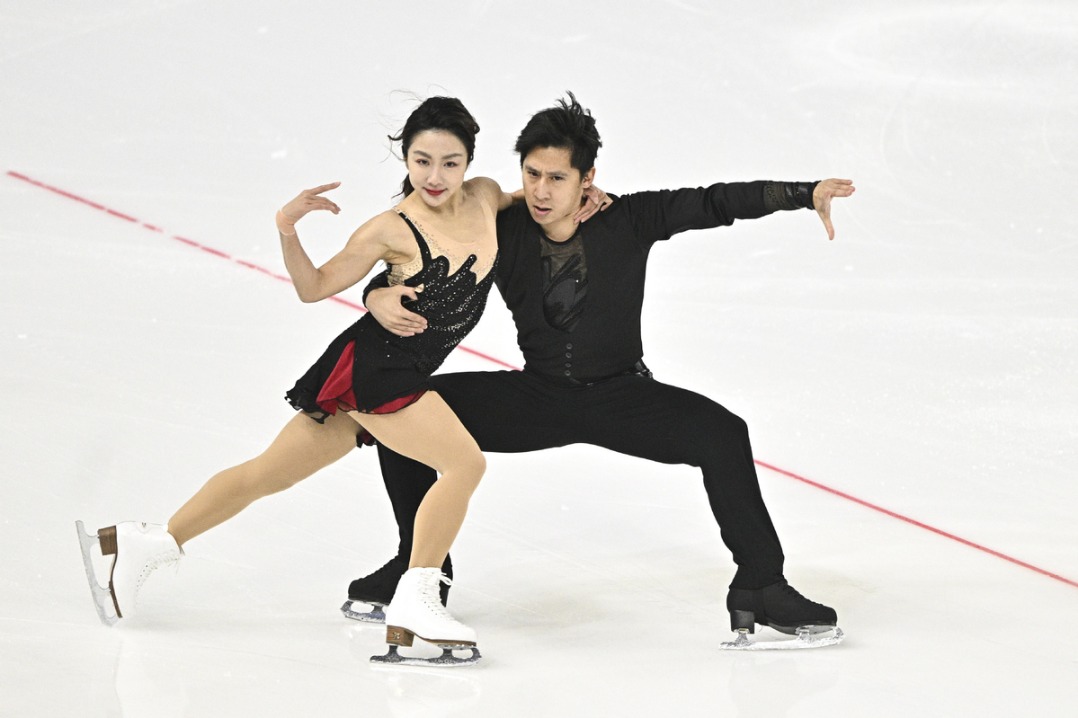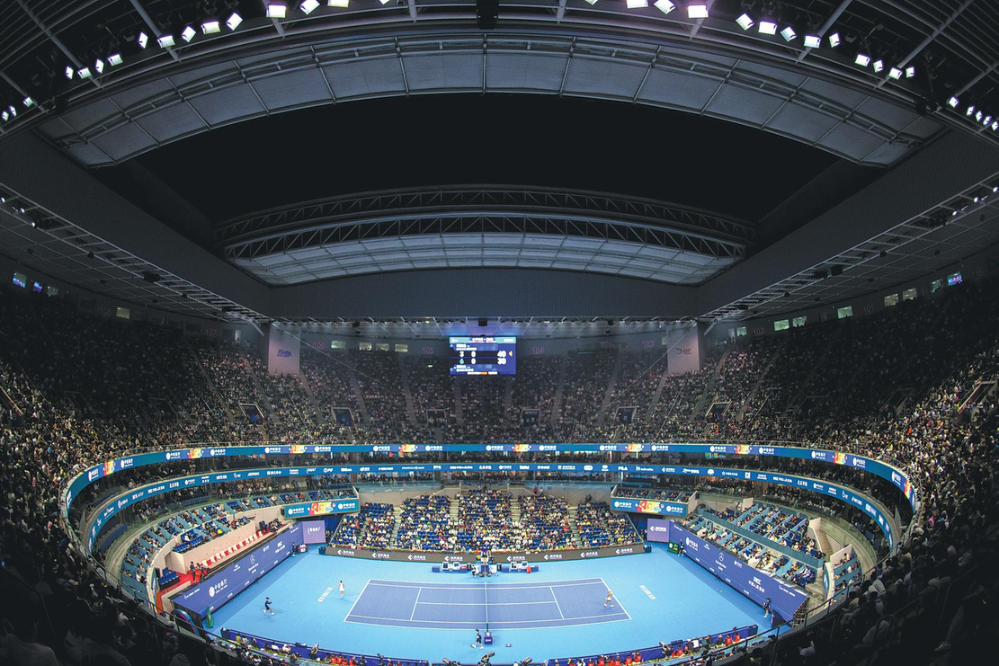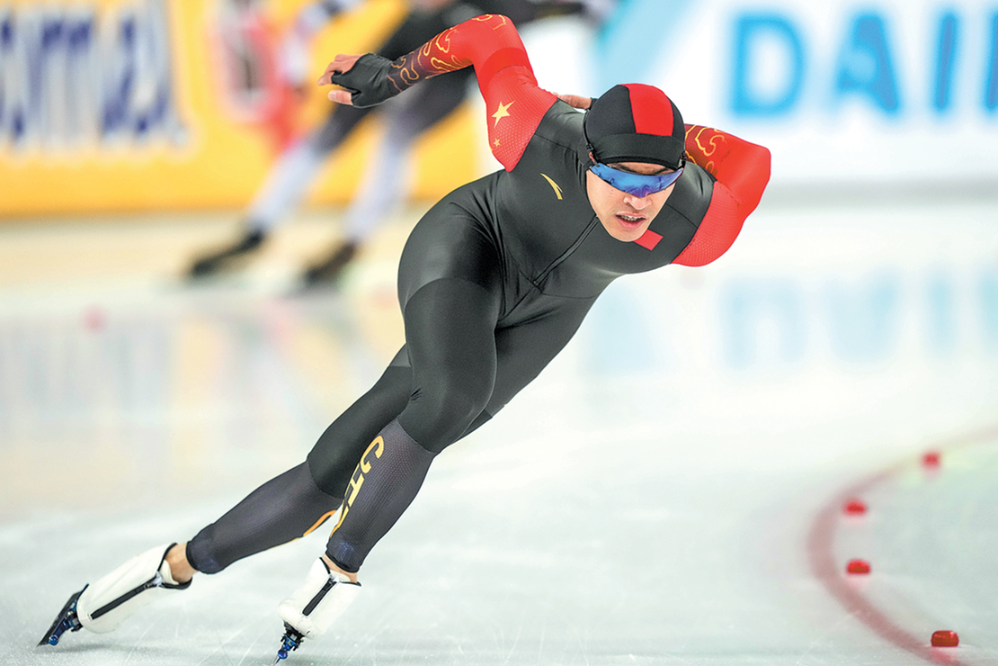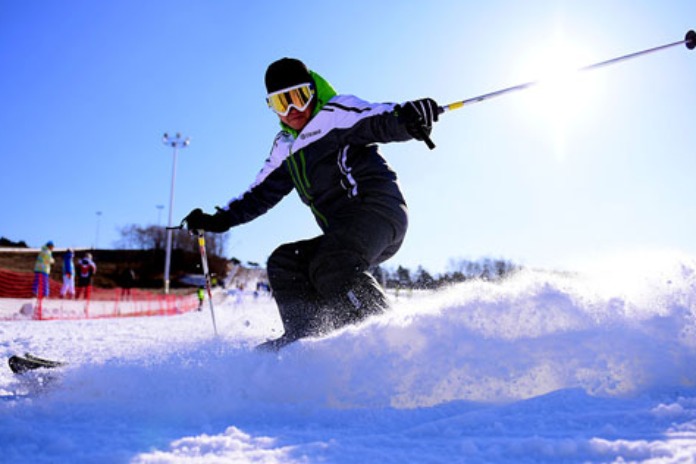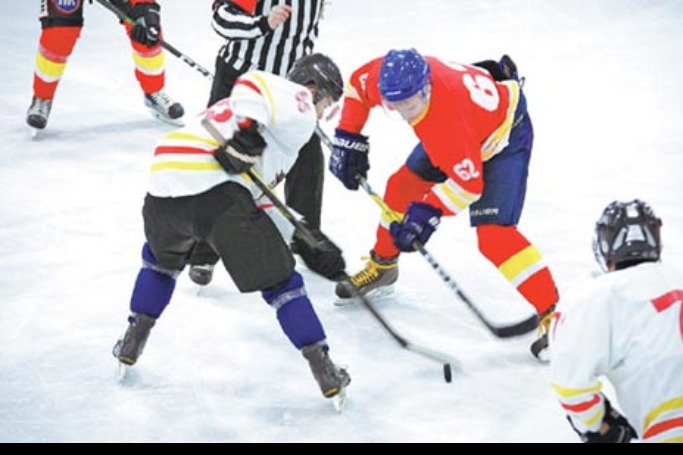High-tech practice partner is the ultimate in serving sophistication

Table tennis players need never be short of a practice partner again thanks to the latest in artificial intelligence wizardry from a Shanghai university.
Meet Pangbot M-ONE-a robot that serves with a racket and adjusts the speed and spin of the ball according to a player's level. M-ONE also produces and analyzes data on the returns a player hits to help improve performance.
Codeveloped by China Table Tennis College of Shanghai University of Sport and SIASUN Robot &Automation Co Ltd, the device was officially launched at the end of March. Its creators claim it's the world's first mass-produced table tennis robot that uses mechanical arms to serve with a racket.
"Our purpose in producing this robot is to combine artificial intelligence with education. It will be used mainly in schools, family fitness activities and professional training," said Ren Jie, deputy dean of the college.
"Having been developed for two years, the new Pangbot M-ONE allows for greater levels of customization compared with its previous generation," Ren added.
The China Table Tennis College established its AI research center in 2015 with the goal of manufacturing a mechanical arm that can be used as a training partner within two years.
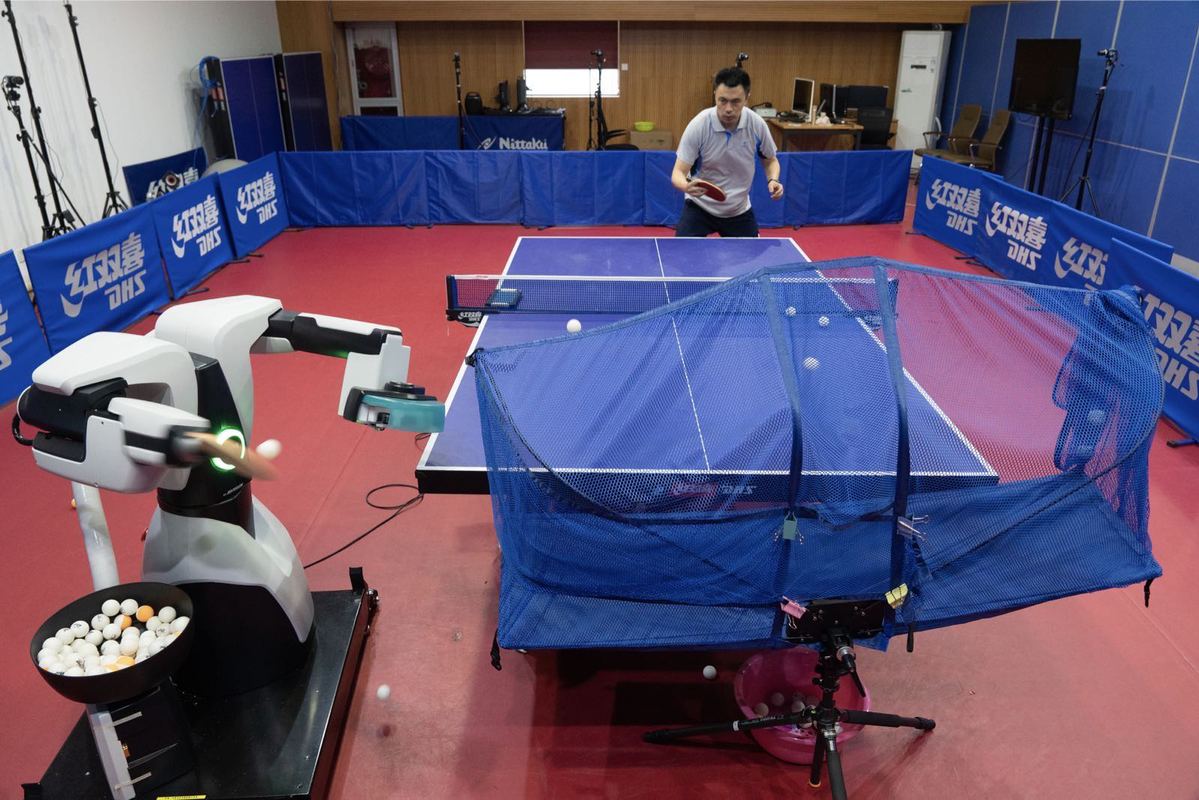
The first domestic table tennis robot with independent intellectual property rights debuted at the 19th China International Industry expo in 2017. It was codeveloped by the college and SIASUN Robot &Automation Co Ltd.
The new M-ONE not only operates in a more human-like way than its predecessor, it also boasts breakthroughs in AI application.
With one arm used for throwing and the other for striking the ball with a racket, the robot can play in different modes, varying the speed of the serve, its spin and the positions it hits the table, all via a mobile app.
Therefore, the device can meet the needs of different levels of players with a personalized training program. It can also be used to analyze a player's movement and where shots are landing to rate performance and generate data-based feedback, according to Ren.
"While table tennis players need to observe the movement of their opponent to predict the position of the landing points, a simple serving machine couldn't satisfy the all-round training of players," Ren said.
"The balls served by the M-ONE aren't the fastest or have the strongest spin, but they are precise and stable, and the landing points are also changeable."
Ren added that the robot's fastest serve speed is around one and a half to two balls per second so far. Improving on that is proving to be one of the bottlenecks of the development, along with setting more accurate landing points and trying to cut the retail price.
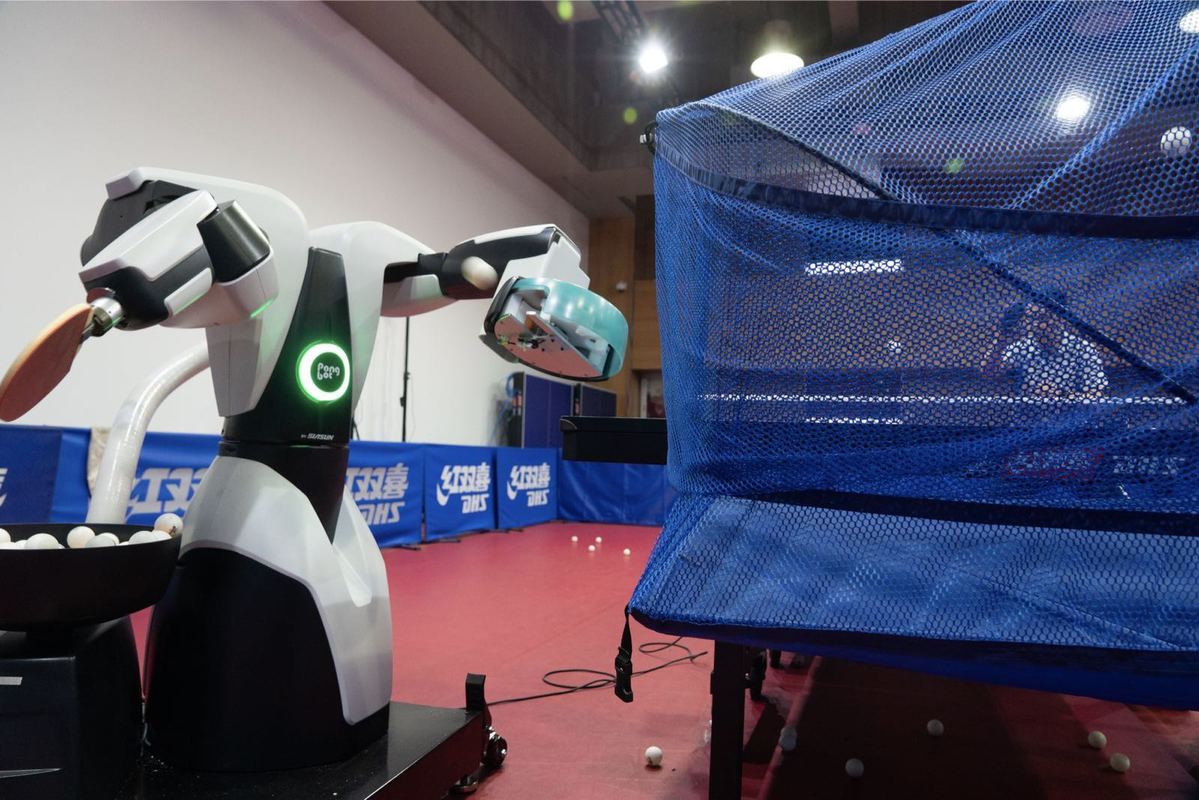
To date, around 60 robots have been manufactured, with selling prices ranging from 30,000 to 40,000 yuan ($4,200 to 5,700). A hundred units will be produced by the end of this month, said Ren.
"It could replace part of the manpower soon and will be mainly used in multi-ball training sessions to greatly improve efficiency," said Gu Nan, a table tennis coach at Shanghai University of Sport.
Gu is already planning to incorporate the robot into daily training sessions at the university.
"Another advantage is that if two people have just started to learn table tennis they can't practice together, but the machine can solve this problem well by becoming the training partner," Gu added.
Ren said that the team responsible for developing the robot will be looking to make it cheaper and more intelligent by adding extra functions to help players improve their game.
"The next step is to challenge human beings with the robot by the end of the year, so that ordinary people, even professionals, can hardly defeat it," said Ren, who believes that the M-ONE might eventually become a significant training tool for the pros.
Video by Gao Erqiang
Most Popular
- On top of their game
- China's sports science institute trumpets national fitness rise
- South Korea's An equals calendar year title record
- Veterans answer the call
- Kyrgios prevails in 'Battle of the Sexes'
- Sanya Marathon draws 14,000 runners from 19 countries and regions

















